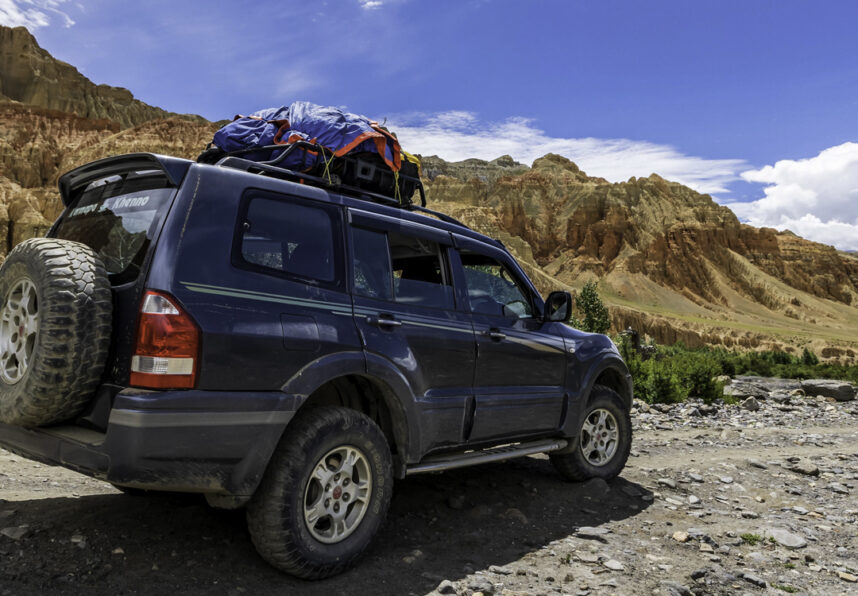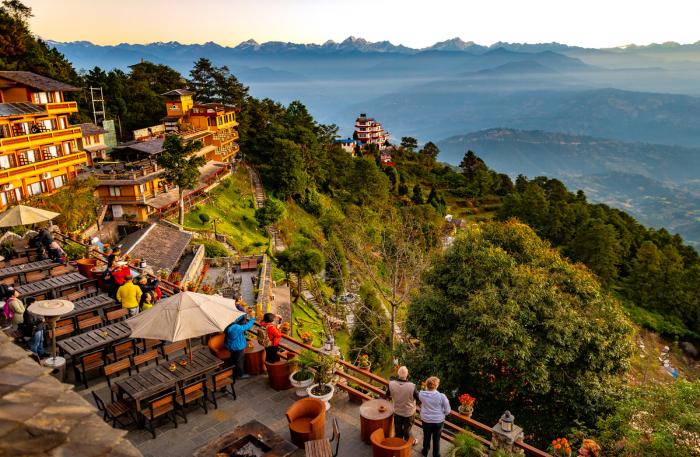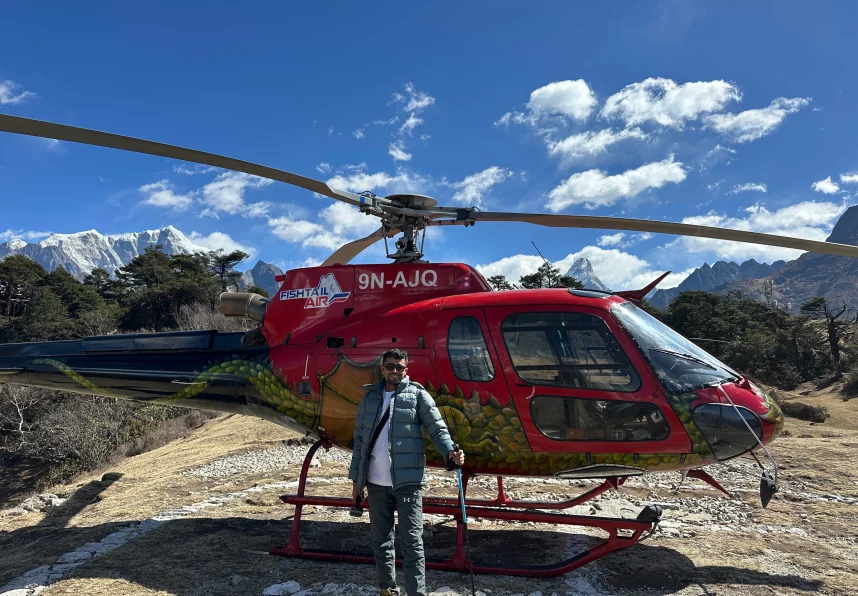Kathmandu Valley Tour combines exploration of spiritual shrines and UNESCO world heritage sites. By this tour, you can explore the rich cultural and spiritual heritage of Kathmandu Valley with this 5 day Kathmandu Valley Tour visiting UNESCO World Heritage Sites, ancient temples, traditional villages, and serene monasteries.
Kathmandu Durbar Square is an ideal starting point for exploring the Kathmandu Valley. Recognized as a UNESCO World Heritage Site, it boasts numerous temples and monuments that reflect the rich culture, traditions, and religion of the local people. The name “Kathmandu” is derived from the ancient Kasthamandap, a structure believed to be constructed from a single large tree. Significant temples here include Maru Ganesh, Kal Bhairab, Akash Bhairab, Taleju Temple, Shiva Parvati Temple, Makhan Mahadev Temple, and Krishna Temple, each playing a role in festivals like Indra Jatra. Kumari Ghar, the residence of the Living Goddess Kumari, and the former royal palace from the Rana regime, offer historical insights into the valley’s past. The Malla Dynasty’s architectural legacy is evident throughout the area, with Basantapur Dabali serving as a well-known resting spot.
The Swet Machchhendranath Temple, located in Machchhendra Bahal near Kathmandu Durbar Square, is renowned for its annual Seto Machhendranath festival. During this event, a towering chariot, supported by four large wooden wheels, is constructed to carry the statue of Seto Machhendranath. Locals pull this chariot through the valley using large ropes, celebrating this significant festival.
Situated in the heart of Indra Chowk, the Akash Bhairab Temple is a stunning three-story structure. During the Indra Jatra festival, the statue of Akash Bhairab is displayed outside for about a week, marking the celebration of one of Kathmandu Valley’s prominent festivals.
Hanuman Dhoka Durbar, the ancient royal palace of Nepal’s kings, showcases temples and palaces that embody the region’s religious, traditional, and cultural heritage. Notable sites within the complex include Taleju Temple, the statue of Kal Bhairav, the Nine-Storeyed Durbar, the Historical Museum of Nepalese Kings, Gaddi Baithak, and the Big Bell. The statue of Swet Bhairab, hidden behind a netted wooden block, is revealed only during Indra Jatra. Photography is prohibited inside the museums and Nasal Chowk, which are closed on Tuesdays and government holidays.
Kumari Ghar, the residence of the Living Goddess Kumari, is located near Hanuman Dhoka Palace. Built in 1757 and renovated in 1966, this three-story brick building features ornate wood-carved windows and divine sculptures. During Indra Jatra, Kumari is paraded in a chariot around Kathmandu Durbar Square. Photography inside Kumari Ghar is not permitted, but photographs of Kumari and the building can be purchased outside.
Kasthamandap, constructed by King Laxmi Narsingha Malla of the Malla Dynasty, is located near Kumari Ghar. It is believed to have been built from a single tree, and the city of Kathmandu derives its name from this temple.
Ashok Vinayak Temple, located behind Kasthamandap, is also known as Maru Ganesh due to its lack of a steeple. This small but significant temple holds great importance.
A short distance from Kasthamandap, the Jaishi Dewal Shiva Temple is known for its erotic carvings and plays a key role in festivals like Indra Jatra and Gai Jatra.
Dedicated to Manjusri or Saraswati, the goddess of learning, Swayambhu Nath Temple is a prominent site for observing religious harmony in Nepal. This ancient stupa is one of the oldest in the region and is surrounded by monasteries with large prayer wheels, Buddhist paintings, and butter lamps. The temple offers panoramic views of the Kathmandu Valley and is accessible via a steep climb or a road that approaches the stupa’s base.
Located about 5 km east of downtown Kathmandu, the Boudhanath Stupa is one of the world’s largest and most significant Tibetan Buddhist monuments outside Tibet. It is a focal point for pilgrims, especially during the full moon and new moon days when rituals and ceremonies are held.
Pashupatinath is the holiest pilgrimage site in Nepal, featuring a complex with linga images of Shiva, statues, shrines, and temples dedicated to various deities. The current temple, built by King Bhupatindra Malla in 1697, is adorned with a gold-plated roof, silver doors, and exquisite wood carvings. Other significant sites within the complex include Guheswari Temple, Rajeswari Temple, Kailas with ancient lingas, Goraknath Temple, and the Arya Ghat cremation grounds. Photography of cremations and bereaved families is strictly prohibited, and the main courtyard is restricted to Hindus.

Bhaktapur Durbar Square, a stunning example of pagoda and shikhara-style architecture, surrounds the fifty-five-window palace. Key highlights include:
Patan, the second largest city in the Kathmandu Valley, is known for its Hindu temples and Buddhist monuments, with intricate bronze gateways and guardian deities. Key attractions include:
The Kathmandu Valley, encompassing Kathmandu, Lalitpur (Patan), and Bhaktapur (Bhadgaon), is located at an altitude of 1336 meters and covers 218 square miles. Major attractions include:
Day 01: Kathmandu Durbar Square, Boudhanath, Pashupatinath Temple, and Swayambhu Nath Temple
Day 02: Full Day in Bhaktapur Durbar Square
Day 03: Bungmati, Khokana, and Patan Durbar Square
Day 04: Dakshinkali, Kirtipur, and Pharping Monastery
Day 05: Godavari Botanical Garden and Narayanthan Sleeping Vishnu Temple
Begin your journey in the heart of Kathmandu by exploring the Kathmandu Durbar Square, a UNESCO World Heritage Site that serves as a stunning reminder of the city's historical and cultural heritage. The square is home to ancient palaces, intricately carved wooden structures, and temples, including the Kumari Ghar, the residence of the living goddess Kumari. This area offers a glimpse into the royal history of Nepal and its rich architectural traditions.
Afterward, visit the Boudhanath Stupa, one of the largest and most significant stupas in the world. This massive structure is a key pilgrimage site for Buddhists and is surrounded by monasteries and shops selling Tibetan artifacts. The serene atmosphere and the sight of devotees circumnavigating the stupa make this a truly spiritual experience.
Next, head to the sacred Pashupatinath Temple, one of the holiest Hindu temples dedicated to Lord Shiva. Situated on the banks of the Bagmati River, the temple complex is a place of religious significance and a center for spiritual rituals. The ghats of Pashupatinath are also used for cremation ceremonies, adding a somber but culturally rich aspect to your visit.
Conclude the day with a visit to Swayambhu Nath Temple, commonly known as the Monkey Temple due to the large population of monkeys that reside here. Perched on a hill overlooking Kathmandu, this ancient stupa is another UNESCO World Heritage Site and offers breathtaking panoramic views of the city. The stupa’s eyes, painted on all four sides, symbolize the all-seeing nature of Buddha, and the site is a blend of Hindu and Buddhist traditions.
On the second day, dedicate your time to exploring Bhaktapur Durbar Square, another UNESCO World Heritage Site. Bhaktapur, also known as the "City of Devotees," is renowned for its well-preserved medieval architecture, art, and culture. As you stroll through the square, you will encounter a series of magnificent palaces, temples, and courtyards, each telling a story of Nepal's rich history.
Highlights of the day include the 55-Window Palace, an outstanding example of traditional woodwork, and the Vatsala Temple, known for its intricate stone carvings. The Nyatapola Temple, a five-storied pagoda, is another must-see structure, offering insight into Nepalese architectural brilliance. Spend the day immersing yourself in the local culture, visiting artisans at work, and perhaps enjoying some local delicacies in one of the nearby restaurants.
Your third day is dedicated to exploring the traditional Newari villages of Bungmati and Khokana, followed by a visit to Patan Durbar Square. Start with Bungmati, a village known for its rich cultural heritage and as the birthplace of the deity Rato Machhindranath. The village is famous for its woodcarvers and offers a glimpse into traditional Newari life.
Next, visit Khokana, a small village that is known for its mustard oil production. The village is characterized by its traditional houses and the ancient Rudrayani Temple. Both Bungmati and Khokana offer a step back in time, showcasing life as it has been for centuries.
In the afternoon, head to Patan Durbar Square, another UNESCO World Heritage Site and the center of Patan’s cultural and artistic heritage. The square is home to the ancient royal palace, beautiful courtyards, and a series of pagoda-style temples. The Krishna Mandir, with its intricate stone carvings, is a highlight here. Spend the evening exploring the museum housed within the palace, which contains a wealth of artifacts reflecting the city's long history.
On the fourth day, set out to visit the Dakshinkali Temple, located about 19 kilometers from Kathmandu. This temple, dedicated to the goddess Kali, is a major pilgrimage site where animals are sacrificed, especially during the Dashain festival. The temple is set in a forested area, offering a peaceful atmosphere that contrasts with the intense religious activities.
Afterward, head to Kirtipur, an ancient town perched on a hilltop, offering panoramic views of the Kathmandu Valley. Kirtipur is known for its historical significance, traditional Newari architecture, and numerous temples, including the Bagh Bhairab Temple. Stroll through the narrow streets and enjoy the old-world charm of this town.
Next, visit the Pharping Monastery, a revered Buddhist site located nearby. The monastery is associated with Guru Rinpoche, who meditated here, and it continues to be an important site for Buddhist practitioners. The area around Pharping also offers some beautiful hiking trails and serene landscapes.
n your final day, take a scenic drive to the Godavari Botanical Garden, located 26 kilometers from Kathmandu. This garden is a haven of tranquility, with a diverse collection of plants, including rare and endangered species. The garden is a perfect place to relax, enjoy nature, and perhaps even indulge in a picnic.
In the afternoon, visit the Narayanthan Sleeping Vishnu Temple, also known as Budhanilkantha. This temple features a massive stone statue of Lord Vishnu reclining on a bed of serpents, located in the middle of a pond. The temple is an important pilgrimage site, attracting devotees from all over Nepal and beyond. The serene setting and the sacred atmosphere make it a fitting end to your cultural exploration of the Kathmandu Valley.




If you are looking for travel in Nepal, Bishnu will help you to make your perfect trip plan. He has been working on this industry for more than 10 years